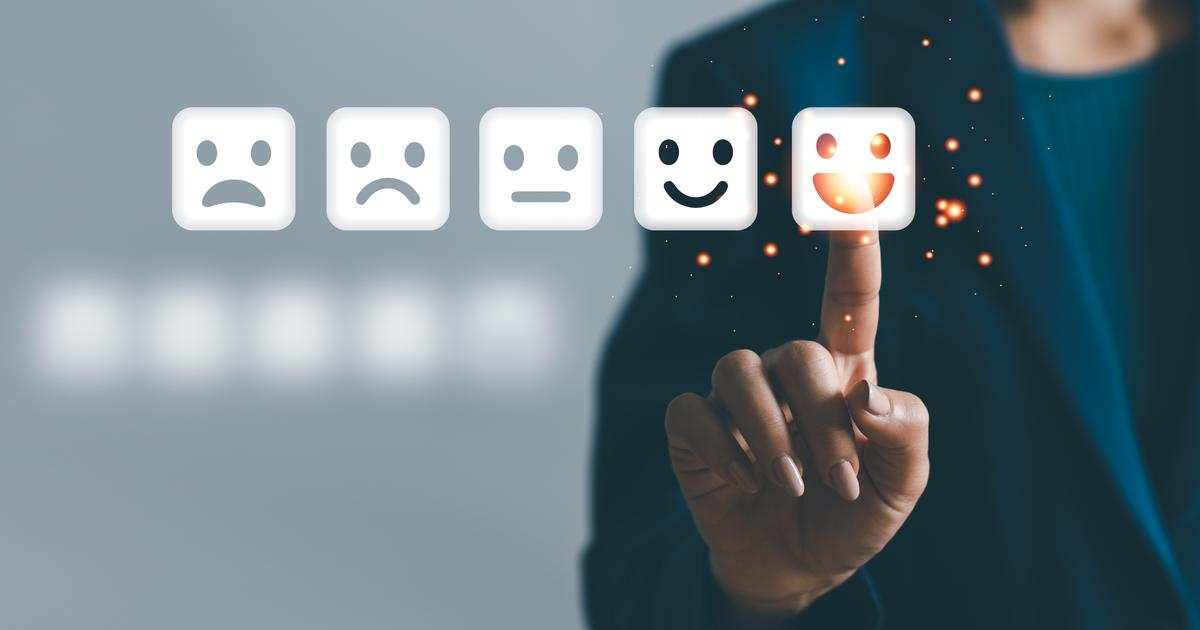5 Steps to a 7-Figure eCommerce Business (With Case Study & Mistakes to Avoid)

In the world of eCommerce, reaching 7 figures eCommerce in annual revenue is a dream shared by many entrepreneurs. Turning that dream into a reality requires more than just luck, it demands a well-thought-out strategy and relentless dedication. If you’re looking to scale your eCommerce business to seven figures and beyond, here are five essential steps to guide you on your journey to success.
A 7 figures eCommerce business is an eCommerce enterprise that generates annual revenue or sales in the 7 figures eCommerce range. To be more specific, it means that the eCommerce business makes over $1,000,000 (or the equivalent amount in another currency) in gross sales or revenue within a year.
For instance, if an eCommerce store reports $1,500,000 in total sales for a particular year, it is considered a 7 figures eCommerce business. Reaching the 7 figures eCommerce mark is a significant achievement in the eCommerce industry, and it signifies substantial financial success and growth for the online retail operation. Such businesses typically have a large customer base, a wide range of products or services, and effective marketing and operational strategies in place.
5 Steps to scale your eCommerce to 7 Figures
Scaling your eCommerce business to 7 figures is a challenging but achievable goal. Here are five essential steps to help you reach this milestone:
Step 1. Market Research and Niche Selection
Market Research and niche selection are foundational steps in building a successful eCommerce business. These steps help you understand your target audience, identify profitable opportunities, and position your business for growth. Let’s delve deeper into the importance of market research and how to choose the right niche for your eCommerce venture.
Market Research
Market research involves gathering and analyzing data about your industry, competitors, and target market. It provides valuable insights that can shape your business strategy. Here’s why it’s essential:
- Understanding customer needs: Market research helps you identify the needs, preferences, and pain points of your potential customers. This knowledge is crucial for developing products or services that address specific customer demands.
- Identifying market trends: By staying updated on industry trends, you can adapt your offerings to meet evolving consumer expectations and enhance customer retention by consistently delivering value. This keeps your business relevant and competitive..
- Assessing competition: Arching your competitors allows you to identify gaps in the market and find opportunities to differentiate your business. You can also learn from their successes and failures.
- Market sizing: You can estimate the size of your target market and understand its growth potential. This information helps you set realistic goals and projections for your eCommerce business.
Niche Selection
Choosing the right niche is a critical decision that shapes your business’s identity and success. Here’s how to select a niche effectively:
- Passion and knowledge: Start by considering your own interests and expertise. A niche that aligns with your passions is more likely to sustain your enthusiasm and commitment over the long term.
- Market demand: Research the demand for products or services within your chosen niche. Look for niches with steady or growing demand, as this indicates potential for profitability.
- Competitive landscape: Analyze the competition within the niche. High competition may indicate a thriving market, but it can also make it harder to stand out. Consider niches where you can compete effectively.
- Target audience: Define your ideal customer persona. Understand their demographics, behaviors, and pain points. Choose a niche that appeals to this target audience.
- Profitability: Evaluate the potential profitability of your chosen niche. Consider factors like pricing flexibility, profit margins, and the lifetime value of customers.

Step 2. Build a High-Quality Website
Building a high-quality website is crucial for the success of your eCommerce business. Your website serves as your digital storefront, and it’s where potential customers form their first impressions. Here are the key steps and considerations to create a high-quality eCommerce website:
- Choose the right platform: Select an eCommerce platform that aligns with your needs and technical proficiency. Popular options include Shopify, WooCommerce, Magento, and BigCommerce.
Read more: 7 best B2B eCommerce marketplaces to success in 2023
- Professional design: Invest in a professional web designer or use a high-quality website template. Your website’s design should reflect your brand, be visually appealing, and provide a seamless user experience. Ensure that your website is responsive, meaning it works well on both desktop and mobile devices. Many users shop on smartphones, so mobile optimization is critical.
- User-friendly navigation: Create an intuitive and straightforward navigation structure. Use clear menus and categories to help users find products easily. Implement a search bar with auto-suggest functionality to assist users in finding specific items quickly.
- High-quality product images and descriptions: Use high-resolution images that showcase your products from various angles. Include zoom-in functionality for a closer look. Write compelling product descriptions that highlight features, benefits, and unique selling points. Provide accurate information about sizing, materials, and specifications.
- Secure payment processing: Ensure that your eCommerce platform offers secure payment processing. Use SSL certificates to encrypt data and protect customer information. Offer multiple payment options to accommodate a variety of customer preferences.
- Efficient shopping cart and checkout: Streamline the shopping cart and checkout process to minimize friction and cart abandonment. Implement features like a one-click checkout option and guest checkout to make it easy for customers to complete their purchases.
- Content and Blogging: Include a blog section where you can publish informative articles, how-to guides, and content relevant to your niche. Blogging can improve SEO and establish your expertise.
- Security measures: Regularly update your website’s software, plugins, and security features to protect against cyber threats. Display trust badges and security seals to reassure customers about the safety of their data.
Step 3. Develop a Strong Brand and Marketing Strategy
Developing a strong brand and marketing strategy is essential for the success of your eCommerce business. A well-defined brand identity and an effective marketing plan can help you build brand recognition, attract and retain customers, and drive sales. Here’s how to go about it:
Define your brand identity
- Brand vision: Start by defining your brand’s vision and mission. What values and principles does your eCommerce business stand for? What problems do you solve for your customers?
- Brand values: Clearly articulate your brand’s core values. Are you focused on sustainability, innovation, affordability, or luxury? Your values should align with your target audience’s preferences.
- Unique selling proposition (USP): Determine what sets your eCommerce business apart from competitors. Highlight this USP in your branding to make your business memorable.
Create a strong visual identity
- Logo and colors: Design a distinctive logo and choose a color palette that resonates with your brand’s personality. Consistency in visual elements is key for brand recognition.
- Typography: Select fonts that match your brand’s style. Consider how fonts convey different emotions and choose ones that align with your messaging.
- Graphics and imagery: Use imagery that reflects your brand’s identity and speaks to your target audience. High-quality visuals enhance your website and marketing materials.
Develop a comprehensive marketing strategy
- Identify your target audience: Define your ideal customer personas. Understand their demographics, interests, pain points, and online behavior.
- Content marketing: Create valuable and relevant content that resonates with your audience. This can include blog posts, how-to guides, videos, and social media posts.
- Social media marketing: Choose the social media platforms that align with your target audience and engage with them regularly. Share content, run targeted ads, and foster a community around your brand.
- Email marketing: Build and nurture an email list. Send personalized email campaigns, product updates, and exclusive offers to your subscribers.
- Paid advertising: Invest in paid advertising on platforms like Google Ads, Facebook Ads, and Instagram Ads. Target specific audience segments to maximize ROI.
- Influencer marketing: Partner with influencers or bloggers in your niche to reach a broader audience and gain credibility.
- Measure and adjust: Use analytics tools to track the performance of your marketing efforts. Monitor key performance indicators (KPIs) such as website traffic, conversion rates, and customer acquisition cost.
Step 4. Diversify Product Offerings and Sales Channels
Diversifying your product offerings and sales channels is a strategic approach to expand your eCommerce business and increase revenue. By offering a wider range of products and reaching customers through multiple channels, you can tap into new markets and customer segments. Here’s how to effectively diversify your eCommerce business:
Expand Your Product Catalog
- Identify complementary products: Look for products that naturally complement your existing offerings. For example, if you sell laptops, you could also offer laptop accessories like cases, chargers, and mouse pads.
- Conduct market research: Research market trends and customer demand to find products with growth potential. Analyze competitors and identify gaps in your product catalog that you can fill.
- Consider private labeling: Explore the possibility of creating your own private label products. This allows you to differentiate your brand and potentially achieve higher profit margins.
Cross-selling and upselling
- Cross-selling: Implement cross-selling techniques by suggesting related products when customers view an item. For example, if a customer is buying a camera, suggest camera lenses and memory cards.
- Upselling: Encourage customers to purchase higher-end or premium versions of products. Offer bundles or upgrades that provide additional value.
Explore new sales channels
- Marketplaces: Consider selling your products on popular marketplaces like Amazon, eBay, Walmart, and Etsy. These platforms have a vast customer base and can help you reach a broader audience.
- Social media: Utilize social media platforms like Facebook, Instagram, and Pinterest for eCommerce. Create shoppable posts and run targeted ads to drive sales.
- International markets: Expand your reach by offering international shipping or setting up localized websites for specific regions.
Optimize inventory management
Implement effective inventory management practices to prevent overstocking or stockouts. Use inventory management software to track product levels and sales trends. Consider dropshipping or print-on-demand services to reduce inventory risks and costs.
Customer support and experience
Provide excellent customer service and support across all channels. Ensure that customers receive a consistent and positive experience, regardless of where they interact with your brand.
Step 5. Optimize Operations and Customer Service
Optimizing Operations
- Automation and Technology: Invest in eCommerce and inventory management software to automate repetitive tasks such as order processing, inventory tracking, and shipping. Use data analytics tools to gain insights into customer behavior, sales trends, and inventory management.
- Inventory Management: Implement just-in-time inventory practices to reduce storage costs and prevent overstocking or stockouts. Set up reorder triggers based on historical sales data to maintain optimal stock levels.
- Supply Chain Efficiency: Collaborate closely with suppliers to streamline the supply chain, reduce lead times, and improve product availability. Consider multiple suppliers or manufacturers to diversify your sources and reduce dependency on a single supplier.
- Shipping and Logistics: Negotiate shipping rates with carriers to reduce shipping costs. Offer various shipping options to accommodate different customer preferences, such as standard, express, and international shipping.
- Returns and Refunds: Develop a clear and customer-friendly returns policy to handle product returns efficiently. Implement a returns management system to process returns and refunds promptly.
Enhancing Customer Service
- Responsive Communication: Provide multiple communication channels for customer inquiries, including email, live chat, and a dedicated customer service phone line. Respond to customer inquiries promptly and professionally, aiming for quick resolution of issues.
- Personalization: Personalize customer interactions by using their names and referring to their previous purchases or preferences. Implement product recommendations based on customer browsing and purchase history.
- Knowledgeable Support Team: Train your customer support team to be knowledgeable about your products, policies, and procedures. Empower support agents to make decisions and resolve customer issues without unnecessary escalation.
- User-Friendly Returns Process: Simplify the returns process by providing pre-paid return labels and clear instructions. Use automation to streamline the returns authorization and refund process.
- Feedback and Improvement: Encourage customers to provide feedback through surveys, reviews, and social media. Use customer feedback to identify areas for improvement in products, services, and processes.
- Consistency Across Channels: Ensure that the level of customer service remains consistent across all communication channels, including social media and third-party platforms.
- Proactive Customer Engagement: Reach out to customers for post-purchase feedback and to offer assistance or product recommendations. Notify customers about promotions, discounts, and upcoming product launches.
- 24/7 Availability: Consider offering 24/7 customer support, or at least extended support hours, to accommodate customers in different time zones.
Case study: A successful 7 Figures eCommerce Business
In the world of eCommerce, few stories are as inspiring as that of HomeGoods Haven. This case study explores the journey of a fictional eCommerce business, illustrating how it achieved remarkable 7 figures eCommerce annual revenue and became a beacon of success in the online retail landscape.
Background
HomeGoods Haven started in 2013 as a modest online store offering unique and stylish home decor and furnishings. The visionary behind this venture, Alex, had a keen eye for interior design and a passion for creating spaces that people loved to call home. Recognizing a niche market for affordable yet elegant home goods, Alex embarked on a mission to make HomeGoods Haven a household name.
How has the company applied the 5 steps?
Step 1: Niche selection and target audience
Alex began by carefully selecting the niche of home decor, an area he was genuinely passionate about. He conducted thorough market research, identifying a target audience of homeowners, interior design enthusiasts, and DIY decorators seeking high-quality, budget-friendly products.
Step 2: Building a stellar online store
The foundation of HomeGoods Haven was a top-notch eCommerce website. The site boasted a clean, intuitive design that prioritized user experience. It was mobile-responsive, ensuring that customers could easily shop from their smartphones or tablets. High-resolution images and detailed product descriptions brought the items to life.

Step 3: Brand building and marketing strategy
Alex understood the power of branding. HomeGoods Haven developed a brand that exuded warmth, style, and affordability. This brand was consistently reflected in every marketing initiative. Their marketing strategy included:
- Content Marketing: Regular blog posts offering home decor tips, design inspiration, and DIY guides built a loyal readership.
- Social Media Presence: Active engagement on platforms like Instagram and Pinterest showcased products in real-life settings and encouraged user-generated content.
- Email Marketing: A growing subscriber list received personalized product recommendations, exclusive offers, and informative newsletters.
- Paid Advertising: Strategic Google Ads campaigns and partnerships with home decor influencers amplified the brand’s visibility.
Step 4: Diversifying products and sales channels
HomeGoods Haven continually expanded its product catalog to cater to various tastes and trends. Cross-selling related items and upselling premium versions boosted the average order value. In addition to the main website, the business explored additional sales channels, such as Amazon and Etsy, tapping into new customer segments and markets.
Step 5: Operational efficiency and exceptional customer service
Efficiency was the key to scaling effectively. Automation streamlined order processing, and a robust inventory management system ensured that products were consistently in stock. The brand prided itself on exceptional customer service, responding to inquiries promptly and maintaining hassle-free return policies. Customer feedback was actively sought, leading to product improvements and a growing base of satisfied customers.
Results
Through unwavering dedication and strategic acumen, HomeGoods Haven achieved impressive results:
- Annual revenue: In just 6 years, the business consistently surpassed the 7 figures eCommerce annual revenue mark, with an average of $1.8 million in sales.
- Loyal customer base: A strong focus on customer satisfaction created a loyal customer base, with a high rate of repeat purchases.
- Brand Recognition: HomeGoods Haven became synonymous with stylish and affordable home decor, garnering media attention and industry awards.
- Global expansion: The business expanded internationally, with a growing customer base in several countries.
HomeGoods Haven exemplifies the journey from a humble startup to a 7 figures eCommerce success story. While this case study is fictional, the strategies and principles it highlights passion, branding, diversification, operational efficiency, and customer centricity which are applicable to any aspiring eCommerce entrepreneur looking to achieve 7 figures eCommerce in annual revenue. The story underscores the importance of a clear vision, relentless commitment, and a customer-first approach in the ever-evolving landscape of online retail.
Common mistakes to avoid when scaling
Scaling an eCommerce business is a challenging endeavor, and avoiding common mistakes can make the difference between success and failure. Here are some common mistakes to avoid when scaling your eCommerce business
Insufficient market research
- Mistake: Neglecting to conduct comprehensive market research before expanding.
- Why to Avoid: Expanding into new markets or product categories without understanding customer preferences and market demand can lead to costly mistakes.
- Solution: Invest time in researching your target audience, market trends, and competition to make informed decisions.
Premature scaling
- Mistake: Scaling too quickly without a solid foundation in place.
- Why to Avoid: Rapid expansion can strain resources, lead to operational inefficiencies, and compromise product quality or customer service.
- Solution: Ensure your business is operationally efficient, financially stable, and ready for growth before scaling.
Neglecting data and analytics
- Mistake: Failing to leverage data analytics to guide decisions.
- Why to avoid: Data-driven insights are critical for understanding customer behavior, optimizing marketing strategies, and identifying areas for improvement.
- Solution: Invest in analytics tools, monitor key performance indicators (KPIs), and use data to make informed decisions.
Ignoring customer experience
- Mistake: Providing subpar customer service or neglecting customer feedback.
- Why to avoid: Poor customer experiences can lead to negative reviews, loss of trust, and customer churn.
- Solution: Prioritize exceptional customer service, actively seek and act on customer feedback, and resolve issues promptly.

User Experience Solutions for Magento 2
Significantly improve shopping experience for your online storeOverspending on Marketing
- Mistake: Allocating a disproportionate budget to marketing without measuring ROI.
- Why to Avoid: Overspending on marketing channels that don’t yield results can strain finances and lead to wasted resources.
- Solution: Continuously monitor the performance of marketing campaigns, adjust budgets based
Reluctance to delegate or outsource
- Mistake: Trying to do everything yourself as the business owner.
- Why to avoid: Overextending
- Solution: Delegate tasks to competent team members and consider outsourcing non-core functions to focus on strategic decision-making.
Neglecting cash flow management
- Mistake: Not managing cash flow effectively during rapid growth.
- Why to avoid: Poor cash flow management can lead to financial instability, missed opportunities, or business failure.
- Solution: Monitor cash flow closely, maintain adequate reserves, and consider financing options for working capital.
By avoiding these common mistakes and adopting a proactive and strategic approach to scaling, you can increase the likelihood of successfully expanding your eCommerce business
Conclusion
Achieving 7 figures eCommerce business is a remarkable milestone that demands dedication, strategic planning, and a relentless commitment to excellence. The five steps outlined in this article serve as a roadmap to guide you on your journey to this ambitious goal. Ultimately, the path to 7 figures eCommerce is challenging, but with perseverance and the right strategies, you can turn your eCommerce venture into a thriving with 7 figures, ensuring a smooth and profitable business exit when the time is right.







![Top 20+ Must-have Shopify Apps for 2025 [Free & Paid] - Mageplaza](https://cdn2.mageplaza.com/media/blog/must-have-shopify-apps/top-must-have-shopify-apps.png)
![[2025 Updates] Top 10+ Upsell Apps for Shopify - Mageplaza](https://cdn2.mageplaza.com/media/blog/best-upsell-shopify-app/cover.png)